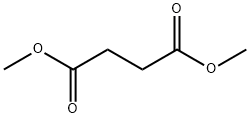A7688012
Triisopropyl phosphite , 95% , 116-17-6
CAS NO.:116-17-6
Empirical Formula: C9H21O3P
Molecular Weight: 208.24
MDL number: MFCD00008874
EINECS: 204-130-0
| Pack Size | Price | Stock | Quantity |
| 5ml | RMB119.20 | In Stock |
|
| 25ML | RMB415.20 | In Stock |
|
| 100ML | RMB1327.20 | In Stock |
|
| others | Enquire |
Update time: 2022-07-08
PRODUCT Properties
| Boiling point: | 63-64 °C11 mm Hg(lit.) |
| Density | 0.844 g/mL at 25 °C(lit.) |
| vapor pressure | <2 mm Hg ( 20 °C) |
| refractive index | n |
| Flash point: | 154 °F |
| storage temp. | -20°C |
| form | Liquid |
| Specific Gravity | 0.844 |
| color | Clear |
| Water Solubility | Insoluble |
| Sensitive | Moisture Sensitive |
| BRN | 1701528 |
| LogP | 2 |
| CAS DataBase Reference | 116-17-6(CAS DataBase Reference) |
| NIST Chemistry Reference | Phosphorous acid, tris(1-methylethyl) ester(116-17-6) |
| EPA Substance Registry System | Phosphorous acid, tris(1-methylethyl) ester (116-17-6) |
Description and Uses
Triisopropyl phosphite can be used as a reactant:
- With Ru-based indenylidene complexes to form 1st generation complexes for metathesis reactions.
- In Perkow-type reaction to synthesize compounds containing polarized carbon-carbon double bonds.
- For the synthesis of phosphonohydrazines by reacting with arylamines and isoamyl nitrite.
It can also be used as an alternative to triphenylphosphine in Mitsunobu reaction to facilitate the isolation of products.
Safety
| Symbol(GHS) |  GHS06 |
| Signal word | Danger |
| Hazard statements | H301-H315 |
| Precautionary statements | P301+P310+P330-P302+P352 |
| Hazard Codes | T,F |
| Risk Statements | 25-38-68 |
| Safety Statements | 37-46-45-36/37 |
| RIDADR | UN 3278 6.1/PG 3 |
| WGK Germany | 3 |
| RTECS | TH2800000 |
| F | 1-10 |
| Hazard Note | Toxic/Flammable/Moisture Sensitive/ |
| TSCA | Yes |
| HazardClass | 3 |
| PackingGroup | III |
| HS Code | 29209090 |
| Hazardous Substances Data | 116-17-6(Hazardous Substances Data) |





